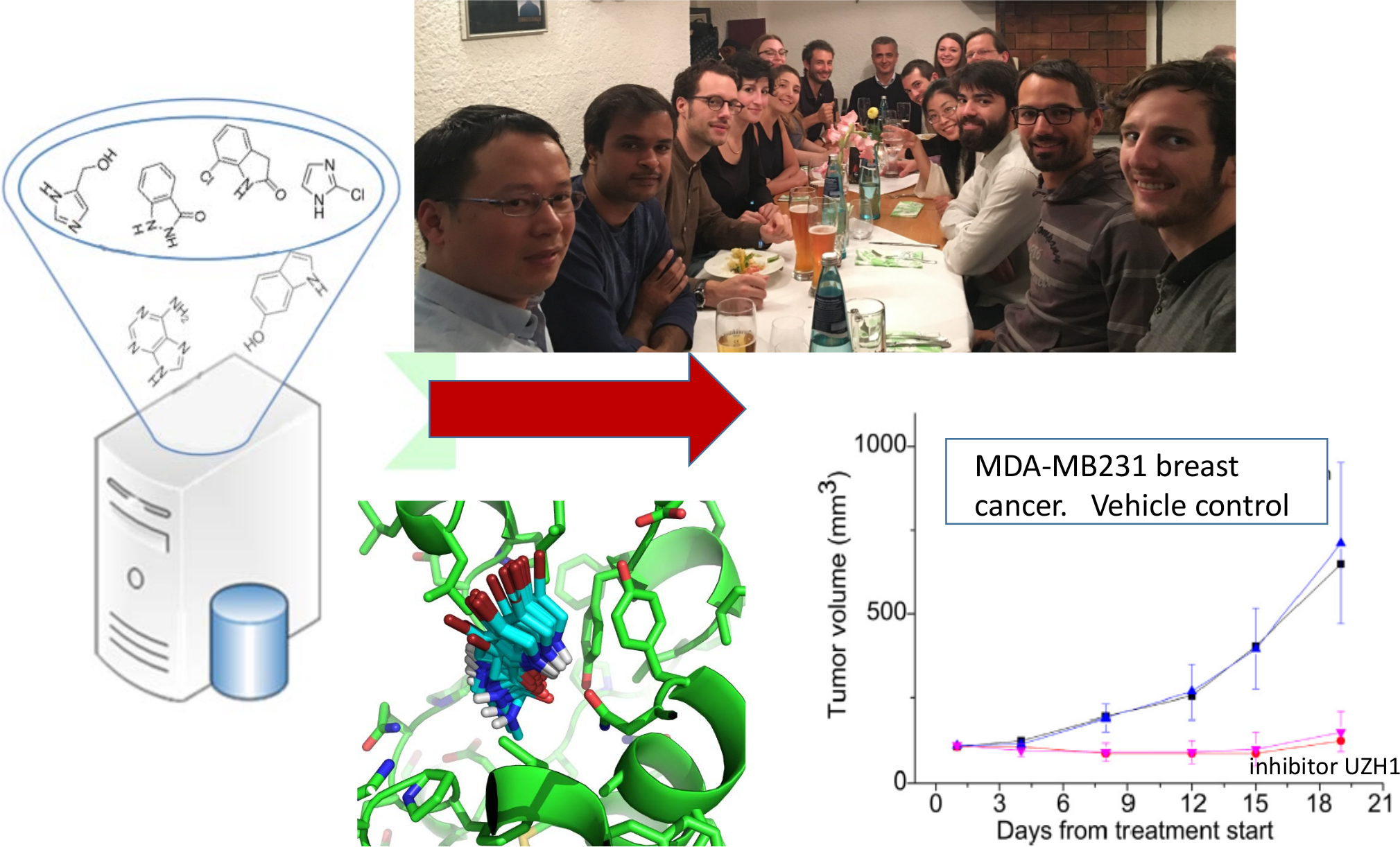Experimental Validation
Background and Motivation
Almost all branches of science utilize reductionist approaches to tame the complexity of real systems. Computer modelling also follows this route albeit by creating virtual models of key elements of such systems. Thus, sound computational predictions face at least four difficulties. First, it takes a good question to ask. The models we employ to depict reality in the computer should be appropriate in both resolution and accuracy in relation to the question. Second, the models must be explored meaningfully. This is a problem often referred to as the sampling problem, and it is linked to model complexity. Third, we need to translate the data produced by our calculations to a falsifiable hypothesis testable on the (or a version of the) real system. This is often a much harder and more pressing problem than intuition might suggest.
Our Approach
Historically, our efforts in in silico drug discovery have long been complemented by crystallographic validation of predicted poses, and this continues to be one of the major wet lab activities in our group. For example, there are now numerous structures of various bromodomains in complex with small molecules, which were solved by members of the group, deposited in the Protein Data Bank. Here, the comparison is relatively simple because the only real issue is model accuracy. A more challenging task is the correlation of predicted binding free energies of small molecules to different targets with experimental ones and we have (and had in the recent past) ongoing efforts to develop and/or utilize quantitative assays both in vitro and in the cell. For other experiments, we engage in collaborations and/or outsource them to the private sector.

